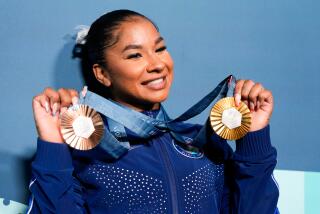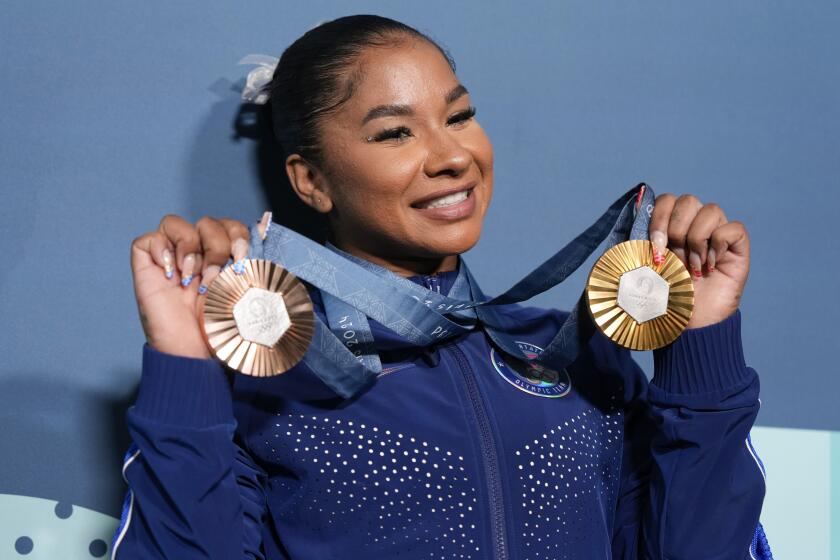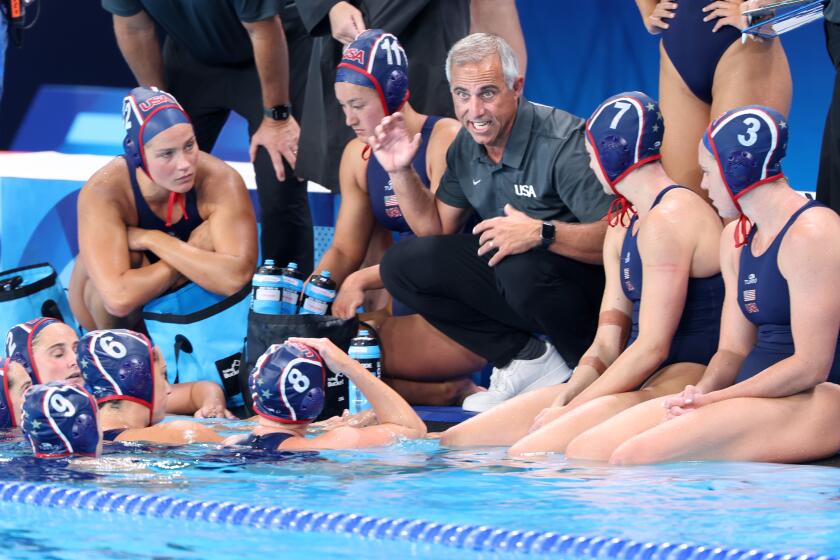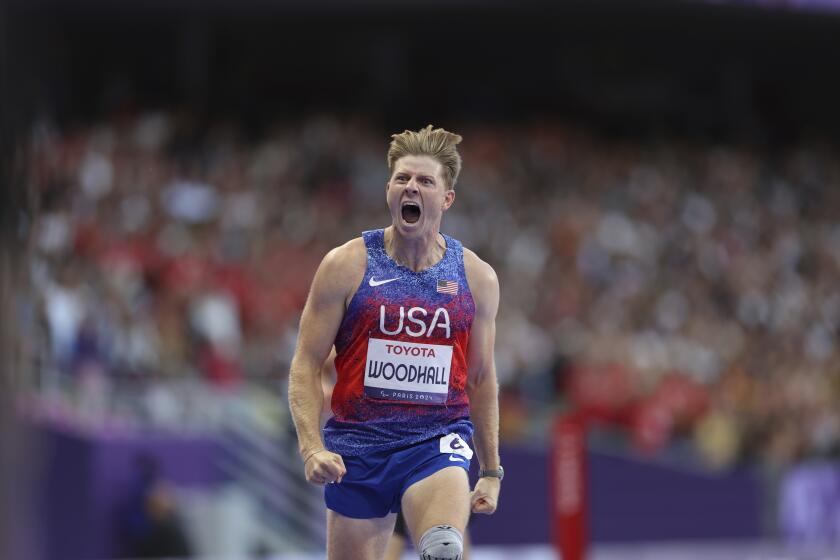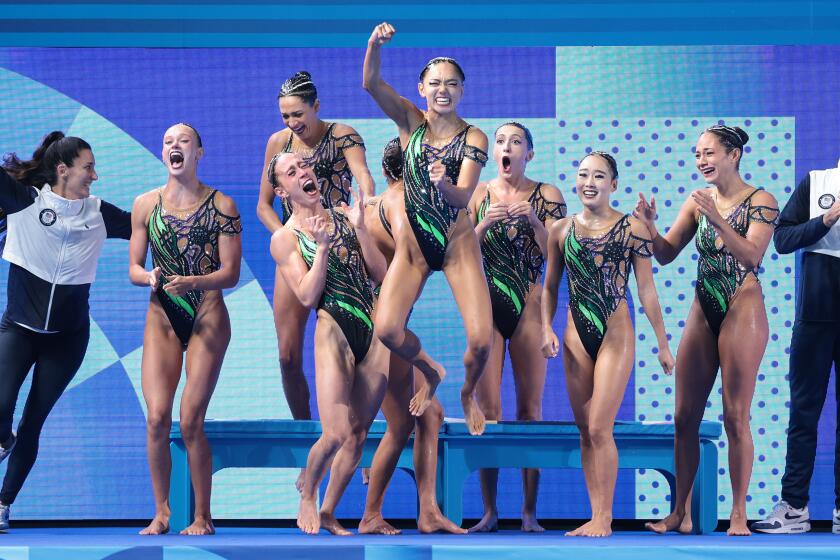A leaner, meaner modern pentathlon
LONDON -- Modern pentathlon has been in the Olympics since 1912, when Baron Pierre de Coubertin thought soldiers and cavalrymen needed their own event.
He came up with the modern version (there had been pentathlon in the ancient Greek Olympics) that included fencing, swimming, shooting, horseback riding and running over the course of five days.
De Coubertin, the father of the modern Olympics, probably didn’t envision a Mexican food stand at the riding grounds hawking burritos and chips and salsa, but, hey, times change.
PHOTOS: 2012 London Olympics | Day 15
The sport has changed too. Starting in 1996 the event was condensed from five days to one.
Saturday, the men started at the ExCeL Center for fencing, moved to the Aquatics Centre for swimming and then finished at Greenwich Park, where they competed in riding and finished with what is now called the combined event, in which the athletes run 3,000 meters and stop periodically to shoot at targets with laser guns (it had been air pistols).
The gold medal went to 27-year-old David Svoboda of the Czech Republic, who was a two-time world champion. Cao Zhongrong of China, who hung his head in disappointment when he couldn’t catch Svoboda, got the silver, and Adam Marosi of Hungary took bronze.
A pair of Russians had been favored. Two-time defending Olympic champion Andrei Moiseev finished seventh and defending world champion Aleksander Lesun was fourth.
In 1912, George Patton was one of the competitors and apparently cost himself a medal in the shooting portion. He used a .38 Colt Special and when he fired 20 bullets at the target that was about 82 feet away, judges found 17 holes. Most of the other shooters use smaller-gauged guns more successfully.
Patton left the shooting portion of the competition in 21st place and suggested later that his big gun made big holes and that perhaps his 17 should have been a higher number. Patton finished fifth overall.
Modern pentathlon is also full of horse stories. The athletes don’t choose their horses. There is a random draw from a pool of horses provided by the sport and the horses aren’t always good.
In 1968,Germany’sHans-Jurgen Todt drew a horse that misbehaved so badly that after he finished, Todt began physically attacking the horse.
At the 1996 Games in Atlanta, Alex Johnson of Australia rode a horse named Kirby that had no hops. Kirby crashed into one jump and threw Johnson over his head. Kirby bashed into a second jump and Johnson bounced off the ground. Finally Kirby ran off the course by himself while officials were lifting the woozy Johnson up and pointing him in the right direction. Johnson finished last.
And Saturday, Dmytro Kirpulyanskyy of Ukraine was almost thrown by his horse Wonderboy. A sheet is distributed listing the horse’s characteristics and Wonderboy was called, “a sensitive ride… very honest with a good jump.” When Wonderboy balked at another jump, Kirpulyanskyy slapped the horse hard on the hindquarters. It wasn’t a love pat.
The sport is no longer about men in the military. A women’s event was added in 2000 and it often is about athletes who are searching for a place where they might reach the Olympics.
Dennis Bowsher, the only American in the event, and a member of the Army, finished 32nd, rode a horse named Vito and afterward said, “I realized my No. 1 dream. To be an Olympian.”
If you’re not good enough to make an Olympic swim team, but you can fence a little, know which end of the horse is which, and if, maybe, you can learn to handle a laser gun, possibly modern pentathlon is for you. And maybe you’ll get to ride a horse named Vito.
twitter.com/mepucin
More to Read
Go beyond the scoreboard
Get the latest on L.A.'s teams in the daily Sports Report newsletter.
You may occasionally receive promotional content from the Los Angeles Times.

